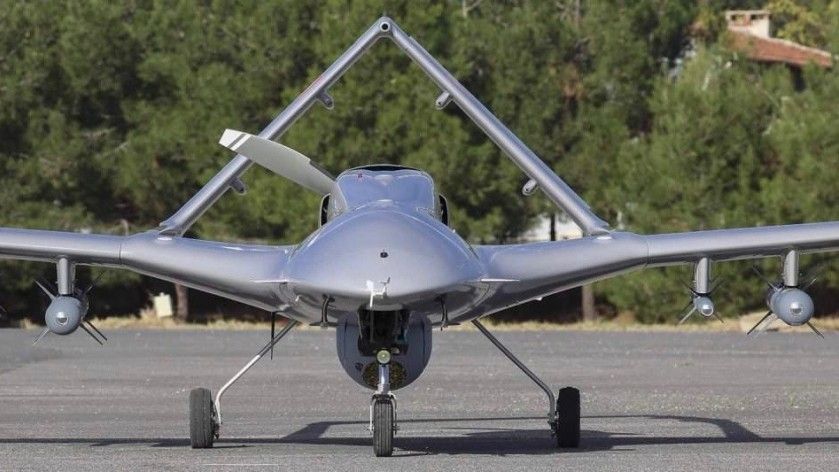Armed Forces
UAVs need to Cooperate with Other Systems. Artillery and Electronic Warfare are Key [INTERVIEW]

Drones, UAVs, and, the robotic warfare is the future of warfare and combat operations, where they present immense battlefield advantage (…) The drone systems that Poland procured are not silver bullets on their own, whereas the operational success can only be achieved if meaningful CONOPS is established – as Dr. Can Kasapoğlu, EDAM told Defence24.pl in an interview.
Jakub Palowski: Poland has recently purchased unmanned aerial vehicles Bayraktar TB2, produced by Turkey. What can be the influence of this sale on the Polish Armed Forces operational capabilities? Poland is seeking to increase its Armed Forces, facing a potential threat from Russian Federation as a NATO Member on the Eastern Flank.
Dr. Can Kasapoğlu, EDAM: Drones, UAVs, and, the robotic warfare is the future of warfare and combat operations, where they present immense battlefield advantage. Accordingly, acquiring this capability is fundamental to adapt Poland’s armed forces for the 21 st century battlefield. These Turkish drone systems, including Bayraktar TB-2, are combat-proven warfare assets, therefore a trustworthy procurement with great reliability, as we have seen in variety of battlegrounds from North Africa to the Caucasus.
The conflicts we have seen in Syria, Libya or Nagorno Karabakh, are way different from the potential threat on the NATO Eastern Flank as we se Some Polish experts say that while there was a level of there were no modern integrated air and missile defence systems (modern air defence systems like Tor or Pantsir did operate on a standalone basis, not as an integrated system, and were present in a limited number). Do you think UAVs like TB2 could be useful in a contested environment, against a high-end adversary, which can use a large number of modern Air Defence systems used in a layered and integrated way and EW threats?
This is a contextually valid concern, as there has not been sufficient integrated & network centric systems in Syria, or Libya. The drone systems that Poland procured are not silver bullets on their own, whereas the operational success can only be achieved if meaningful CONOPS is established. The accomplishments we have seen in Nagorno-Karabakh are the result of such, for example. Using drones in cooperation with electronic warfare systems and land-based fires are the first priorities to start with.
What other elements, beside the unmanned systems themselves and their communications, sensor, are needed to maximise the benefits that come with the use of TB2? I mean not only equipment, C2, but also doctrine, the way of the use of the system, operations concepts? And what were other systems, enablers, that contributed to success of TB2 in the conflict I mentioned?
Drone warfare is an evolving phenomenon, where the triumph of Turkish Armed Forces has been a result of a combination of drone manufacturers –like Baykar and Tusaş – with ASELSAN, ROKETSAN, therefore the integration of smart munitions with the offensive electronic warfare equipment. Hence regarding the operational concept, we recommend paying attention to the complementary electronic systems and munitions.
How can TB2 and other Turkish UAVs cooperate with NATO systems, and in general, with other platforms? Poland is the first Ally to realize the acquisition of Turkish UAVs. Till now, the combat effectiveness and the cost-unit accord has been proven to be the best case among Allied nations. The system is also perfectly NATO compatible.
Bayraktar TB2 is also being used by Ukraine, which is facing a hybrid aggression from Russian Federation. What is the role in your opinion this system plays in Ukraine? Turkish UAVs are flexible, reliable, and with a broad mission array. They can de employed for ISTAR (Intelligence, Surveillance, Target Acquisition and Reconnaissance operations, they can augment artillery and rocket unit as we have seen in Syria. They can be deployed in information operations/warfare by providing significant footage of the battlefield. They can be used in SEAD missions too.
Do you expect that the system will be improved over time, to stay ahead of potential threat, especially as since it was used in conflicts, some of its capabilities may be known to potential adversaries (according to open source information, at least one system was shot down in Nagorno Karabakh)?
Technology is doomed to advance, and the most efficient warfare capability is yet to be developed, and it is a true fact that any system can be targeted. There is not a single weapon system that cannot be intercepted. However, given the kill ratios of the Bayraktar TB-2 and the losses, the results are very promising.
Poland is the first NATO and EU country to purchase Bayraktar TB2 UAVs. Do you think the Polish purchase can increase the Turkish industry opportunities in future?
Definitely, we expect most of the NATO Allies, potentially on the Eastern Flank to have an interest in these systems. The reason for that is that these systems have proven great accomplishment against the Soviet-Russian weaponry edge.
Last but not least, I would like to have a more strategic-political question. On one hand Turkey after having purchased S-400, the relations between Ankara and US/NATO deteriorated, but recently Turkey has increased its engagement in NATO Eastern Flank – Baltic Air Policing, but also deployed a E-7T AEW&C over Romania. Do you see a room for improvement of the relations between Turkey and US/NATO? And how selling UAVs to Ukraine and Poland, will match with the Ankara relationship with Russia?
Starting from the outset, Turkey compartmentalises the cooperation & competition with Russia. Turkey and Russia are at odds in Karabakh, Libya, and Syria. The S-400 procurement has not changed it. The two nations can best be depicted as ‘frenemies’. Over recent years, Turkey’s contribution to NATO has never decreased or stopped. NATO membership is key to the nation’s strategic calculus. With the drone sales and air policing mission, I think this will become more visible to Allied strategic circles.


